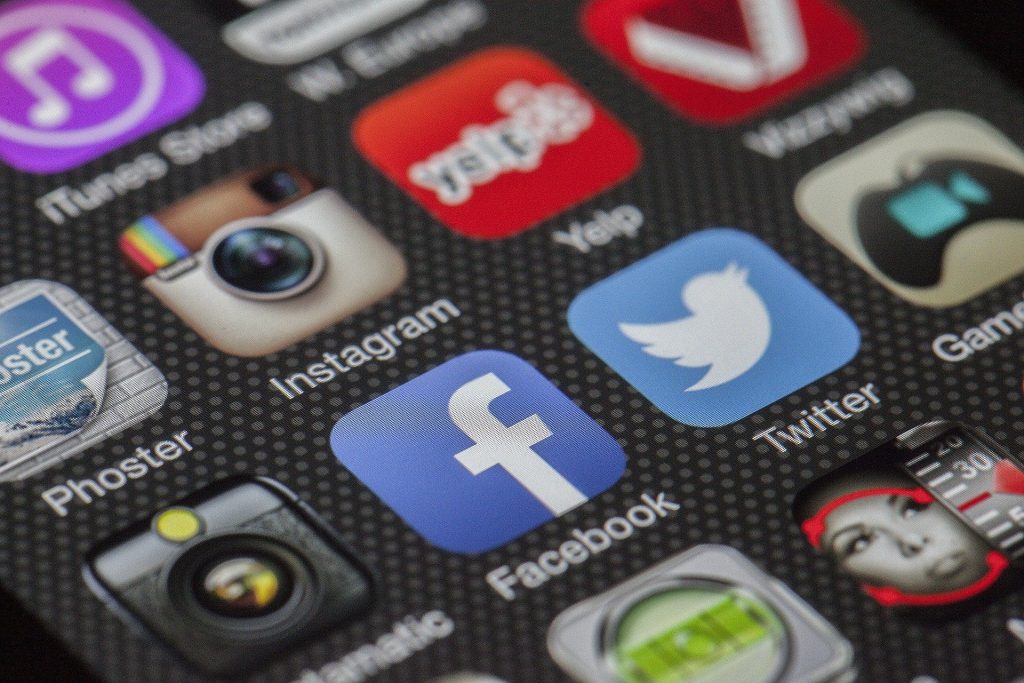Health and wellness topics for employees need to be promoted in the workplace for the sake of the employees and the company. If employees are more engaged in these topics, they are less likely to suffer from mental health disorders, obesity, and other types of health complications.
“Healthy citizens are the greatest asset any country can have,” former UK Prime Minister Winston Churchill once said. Alternatively, you could also say that healthy employees are the greatest asset any company can have. The same concept still applies either way.
According to the Centers for Disease Control and Prevention, over 40% of Americans between 18 and 40 years old experience symptoms of depressive disorder or anxiety disorder.
Here is a more comprehensive breakdown of their findings as of 2023:
- 18-29 Years of Age: 39.2%
- 30-39 Years of Age: 36.8%
- 40-49 Years of Age: 29.3%
- 50-59 Years of Age: 25.8%
- 60-69 Years of Age: 19.4%
In addition, the Centers for Disease Control and Prevent found similar statistics when it comes to the prevalence of obesity amongst Adult Americans.
- Ages 20 and Over: 42.4%
- Ages 20 to 39: 40.0%
- Ages 40 to 59: 44.8%
- Ages 60 and Over: 42.8%
Employees cannot achieve high productivity in the workplace unless they have excellent mental, physical, emotional, and financial health. The knowledge and encouragement you give employees about health and wellness will benefit them for the rest of their lives.
RELATED: 10 Tips to Implement Mindfulness in the Workplace
Why are Health and Wellness Topics for Employees Important?
Employers never used to consider the health and wellness of their employees. But due to the extensive mental and physical demands of today’s jobs, employees need to feel supported by their employers if they’re going to excel at their positions.
Did you know that only 46% of employees say they feel supported by their employers? That means over 50% of employees across all industries believe their employers don’t support their physical and mental health. No wonder employee morale is so poor in today’s America.

Today’s generation of employees cares more about health and wellness than previous generations. Why do you think this is so? Here are some possible reasons:
- There are more sedentary jobs with less social activity
- People have too much exposure to junk foods
- There is less time to exercise and move around
- People have more overall awareness of health and wellness topics
Don’t forget that previous generations didn’t have access to the internet and hundreds of television channels to give them detailed information about health and wellness. They could only rely on what the people around them were saying, such as doctors or teachers. But when it came to their employers promoting wellness topics, forget it.
Now people have access to unlimited sources of information, allowing employees to care more about their health. The only problem is that many employees lack the time, energy, and motivation to do anything about it.
Employer Responsibilities
Employees sacrifice so much for their employers. So, the least that employers can do is promote health and wellness topics to employees and encourage them to improve themselves in every possible way. Then it can benefit everyone in the organization.
The least that employers can do is promote health and wellness topics to employees and encourage them to improve themselves in every possible way.
Health and wellness topics help employees increase the following:
- Happiness
- Motivation
- Energy
- Innovation
- Productivity
- Job Satisfaction
- Personal Satisfaction and Confidence
Employers have several good reasons to care about the health and wellness of their employees. Here is how employers and companies can benefit from having healthy employees:
- Reduced healthcare costs
- Increased productivity and profitability
- Reduced turnover rate
- Save time and money
- Better reputation in the community
- Competitive job openings
An investment in the health of your employees is an investment in the overall success of your company.
RELATED: Healthy Employees: An Important Factor for Workplace Productivity
What are Some Important Health and Wellness Issues in the Workplace?
The high demands placed on employees in the workplace have increased significantly over the past five decades. That is why there has never been a more critical time in American history to promote workplace health and wellness than right now.

The Occupational Safety program at Eastern Kentucky University conducted a study on how much work-related stress affects employees’ health. They compiled some startling statistics:
- 40% of employees claim their jobs make them very or extremely stressful.
- 26% of employees claim their jobs make them feel burnt out often or very often.
- 77% of employees claim they regularly feel physical symptoms caused by stress.
- 73% of employees claim to experience psychological symptoms of stress regularly.
The study also revealed that employers spend an average of $300 million on employee health care and missed workdays annually.
Unhealthy lifestyles and work environments can bring employees on a downward spiral regarding their health and wellness. Don’t be surprised if you find your employees dealing with the following issues:
- Stress
- Depression
- Anxiety
- Hypertension
- Alcoholism
- Smoking
These are only the issues you can see up close. Employees may even be dealing with additional mental, physical, emotional, and financial health issues which may not be apparent to the casual observer.
You could promote dozens of health and wellness topics to help employees overcome all their complicated health issues. Some of the most beneficial topics to employee health include:
- Nutrition & Dieting
- Physical Exercise
- Time Management
- Stress Management
- Hydration
- Financial Planning & Investing
- Confidence Building
- Leadership Skills
Just imagine if your employees were to improve all these areas of their health and wellness. They would be much better off at their jobs and in their own lives.
RELATED: The 7 Best Reasons to Have a Wellness Program: Benefits of Wellness
How Can You Promote Health and Wellness Topics for Employees?
1. Raise Awareness of Unhealthy Triggers
Help your employees recognize the triggers of an unhealthy lifestyle and teach them how to overcome those triggers.

Make them aware of unhealthy triggers like:
- Overworking themselves
- Eating junk food
- Too much sitting
- No vacations or time off
Now implement these remedies in the workplace to help your employees overcome those triggers:
- A fixed shift of 7 to 8 hours per day
- Healthier food options in the cafeteria
- Exercise time throughout the workdays.
- Provide vacation days and sick days to employees
Some employees won’t recognize their unhealthy habits until you raise awareness of them.
RELATED: 13 Fun Workplace Wellness Challenge Ideas Your Employees Will Enjoy
2. Create an Employee Wellness Program
There is no better way to promote health and wellness topics to employees than by creating an employee wellness program. But it must be a program that considers the wants, needs, and priorities of the newer generations in the workforce, such as the millennials.
Millennials currently dominate the workforce. They care more about health and wellness topics than their parents and grandparents. So make sure you implement new ideas that cater to the issues which interest them.
The interests of younger workers include:
- Work and life balance
- Healthy food accessibility
- Environmental pollution
- Affordable housing
- Climate change
It only takes five simple steps to create a company wellness program for millennials:
- Learn what issues matter to them
- Model healthy behavior
- Provide healthy autonomy options
- Show appreciation
- Make sure it is a sustainable program

You cannot only offer discounts on gym memberships or health food stores. The health and wellness topics important to younger workers span beyond their own personal health. They also think about the health of their environment and the rest of the world too.
RELATED: How to Create Company Wellness Programs for Millennials
3. Build Relationships Between Employees
Don’t keep employees alone and isolated because they’ll have less awareness of what they need to do to stay healthy. For this reason, relationship building is critical in any work environment.
Employees can only build relationships if they feel comfortable talking to their coworkers. Here is how to make this process easier for them:
- Learn the strength and weaknesses of your employees
- Assign employees to teams
- Conduct group discussions about health and wellness topics for employees
- Maintain a positive attitude
- Show appreciation for your employees’ work
- Compliment employees when they perform better at work or improve their health
When employees build strong relationships with their coworkers, they can share more information about health and wellness topics and adapt what they learn into their own lives.
4. Create Social Media Profiles for Your Company
Social media can connect employees outside of work. It allows employees to share pictures and comments about personal and professional topics in their lives, such as health and wellness.
Employees could use social media to share health tips and encourage each other to break bad habits. It can almost be like a support system where employees can get extra motivation and advice to improve their health.

Create profiles and fan pages for your company on all the major social media platforms like:
- Tiktok
- YouTube
Distribute the links of your company’s social media pages to your employees. Post up health tips every week on the pages and inspire employees to share tips online.
5. Make Time for Group Exercises is Great For Promoting Health and Wellness Topics For Employees
Any office environment should incorporate group exercises into their daily routine. It gets employees out of their seats to stretch their muscles and boost blood flow.
Have your employees take periodic 5 to 10-minute breaks to participate in various group exercises throughout the workday.
Some popular group exercises for employees include:
- Stretching
- Dancing to music (simple stepping action)
- Sitting and standing repetitions
- Walking outside
- Air punching
Of course, you can get creative by coming up with original group exercise ideas that are best suitable for your organization.
6. Power Napping
A power nap is a short sleeping period lasting 20 to 30 minutes. Many health experts recommend taking power naps during the day if you don’t get enough conventional sleep at night.

The potential benefits of napping include:
- Increases alertness
- Reduces grogginess
- Better focus
- Reduces stress
- More patience
- Better heart health
If you have employees who must work over eight hours per day, encourage them to take power naps on their breaks. It will help them overcome their exhaustion and tiredness for a few more hours.
It is essential to keep the power napping under 30 minutes. Otherwise, your employees will feel sleepy and tired if they nap for longer than 30 minutes.
RELATED: 9 Workplace Well-Being Activities to Skyrocket Employee Productivity
7. Advertisement Bulletin Board to Display Health and Wellness Topics for Employees
Every company has at least one bulletin board hanging up in their hallways or employee breakroom. What you can do is hang up a special bulletin board with advertisements for health-related products and services.
Here are some great advertisement ideas:
- Gym memberships
- Health food stores
- Local charity running events
- Personal trainers
- Nutritious Slurpees / shakes
Maybe you could include a few coupons or discount codes for your employees to take from the bulletin board. Just get creative with the opportunities presented, so your employees will want to take advantage of them.
8. Fitness Wearables
A fitness wearable promotes topics related to physical health. If you allow your employees to wear fitness trackers on their wrists, they can constantly track various aspects of their physical health and wellbeing throughout the workday.

Each fitness tracker model has different options or features, but the basic concept is the same. Here are the primary things a typical fitness tracker device can track about your physical health and activities in real-time:
- The number of steps taken
- The distance traveled
- The number of floors climbed
- The number of calories burned
- The number of minutes spent
- Heart rate
- GPS location
- Sleep quality
- Blood pressure
The use of wearables in the workplace can be optional. You don’t need to force your employees to wear them. Just offer some affordable complimentary wearables to your employees if they participate in your corporate wellness program.
9. Biometric Testing
Biometric testing is a comprehensive physical examination designed to measure your health status and potential health risks. It usually focuses on the following:
- BMI (body mass index)
- Blood glucose
- Blood cholesterol
- Blood pressure
- Height
- Weight
If you have employees at risk of diabetes or high blood pressure, a biometric test will discover this before they develop a more severe or chronic illness. Your employees get screened once every 2 to 3 years.

You can hire an on-site screening company to make the biometric testing easily accessible to your employees. Perhaps you could incorporate it into your corporate wellness program.
RELATED: How to do Biometric Screenings: The Complete Guide
10. Corporate Wellness Consultant
A corporate wellness consultant is a professional who can guide you through creating the perfect health and wellness topics for employees and a viable wellness program that addresses their issues.
You already know a wellness program should be part of your strategy to promote health and wellness topics to your employees. A consultant can improve your wellness programs in a variety of ways, such as the following:
- Solve complicated problems with your worksite wellness program
- Analyze your existing wellness program data
- Guide you on the challenges of designing an effective wellness program
- Provide healthcare tools and resources to the highest risk employees
- Assist in executing worksite wellness projects
A wellness consultant can help the employers and employees simultaneously. They can help employers create a viable wellness program and coach employees on creating a wellness incentive plan to increase their chances of success.
RELATED: 5 Ways a Corporate Wellness Consultant Helps Programs
Final Thoughts on Health and Wellness Topics for Employees
Famous life coach Tony Robbins says, “The higher your energy level, the more efficient your body. The more efficient your body, the better you feel and the more you will use your talent to produce outstanding results.”
The higher your energy level, the more efficient your body. The more efficient your body, the better you feel and the more you will use your talent to produce outstanding results.
Tony Robbins
Health and wellness topics for employees are critical in any modern workplace setting. If you promote these topics to your employees, they have a better chance of improving their physical health, mental health, work productivity, happiness, confidence, and job satisfaction.
Employees are more health-conscious now than previous generations were before them, so their employers must be too. Learn to create a workplace where health and wellness topics are shared and embraced. Then you can improve the health of everyone in your organization one day at a time.
Would you like some personalized advice from a team of professional wellness consultants? Try out the WellSteps free demo to see how our consultants can help you improve the health of your employees and the wellness culture of your organization.
